You would have to implement the function giving the difference of both sides of the equation and then some kind of univariate solver. Due to the convexity of this equation on the positive axis, all the classical methods, esp. the secant method, should work flawlessly.
class myfunc {
public myfunc(int nn, int cc, double aalpha) {...}
public double eval(double p) {
double sum = 1;
double term = 1;
for(int i = 1; i<=c; i++) {
term *= (n*p)/i;
sum += term;
}
return sum*Math.exp(-n*p) - alpha;
}
}
..............
public double secant(myfunc f, double a, double b) {
double fa = f.eval(a);
double fb = f.eval(b);
while(Math.abs(b-a)>1e-10) {
double c = (a*fb-b*fa)/(fb-fa);
a=b; fa = fb;
b=c; fb = f.eval(b);
}
return b;
}
and you would call this with something like
p = secant(new myfunc(n,c,alpha), 0, 0.1);
It turns out that the secant method is unstable, use modified regula falsi
import java.lang.*;
interface RealFunc {
public double eval(double x);
}
class myfunc implements RealFunc {
int c,n;
double alpha;
public myfunc(int nn, int cc, double aalpha) {
c=cc; n=nn; alpha = aalpha;
}
public double eval(double p) {
double sum = 1;
double term = 1;
for(int i = 1; i<=c; i++) {
term *= (n*p)/i;
sum += term;
}
return sum*Math.exp(-n*p) - alpha;
}
}
public class SecantSolverSO34980366 {
static public double illinois(RealFunc f, double a, double b) {
double fa = f.eval(a);
double fb = f.eval(b);
while(Math.abs(b-a) > 1e-10) {
//System.out.printf("a:f(%16.12f) = %16.12f | b: f(%16.12f) = %16.12f \n ",a,fa,b,fb);
double c = (a*fb-b*fa)/(fb-fa);
double fc = f.eval(c);
if( fa*fc < 0 ) {
fa *= 0.5;
} else {
a = b; fa = fb;
}
b = c; fb = fc;
}
return b;
}
public static void main(String[] args) {
int n = 1;
for(double alpha = 0.2; alpha <=1.0001; alpha += 0.1) {
System.out.printf("alpha=%4.2f: ", alpha);
for(int c = 2; c < 15; c+=2) {
double p = illinois(new myfunc(n,c,alpha), 0.,(c+13.0)/n);
System.out.printf("(c=%2d):%12.9f ",c,p);
}
System.out.printf("\n");
}
}
}

